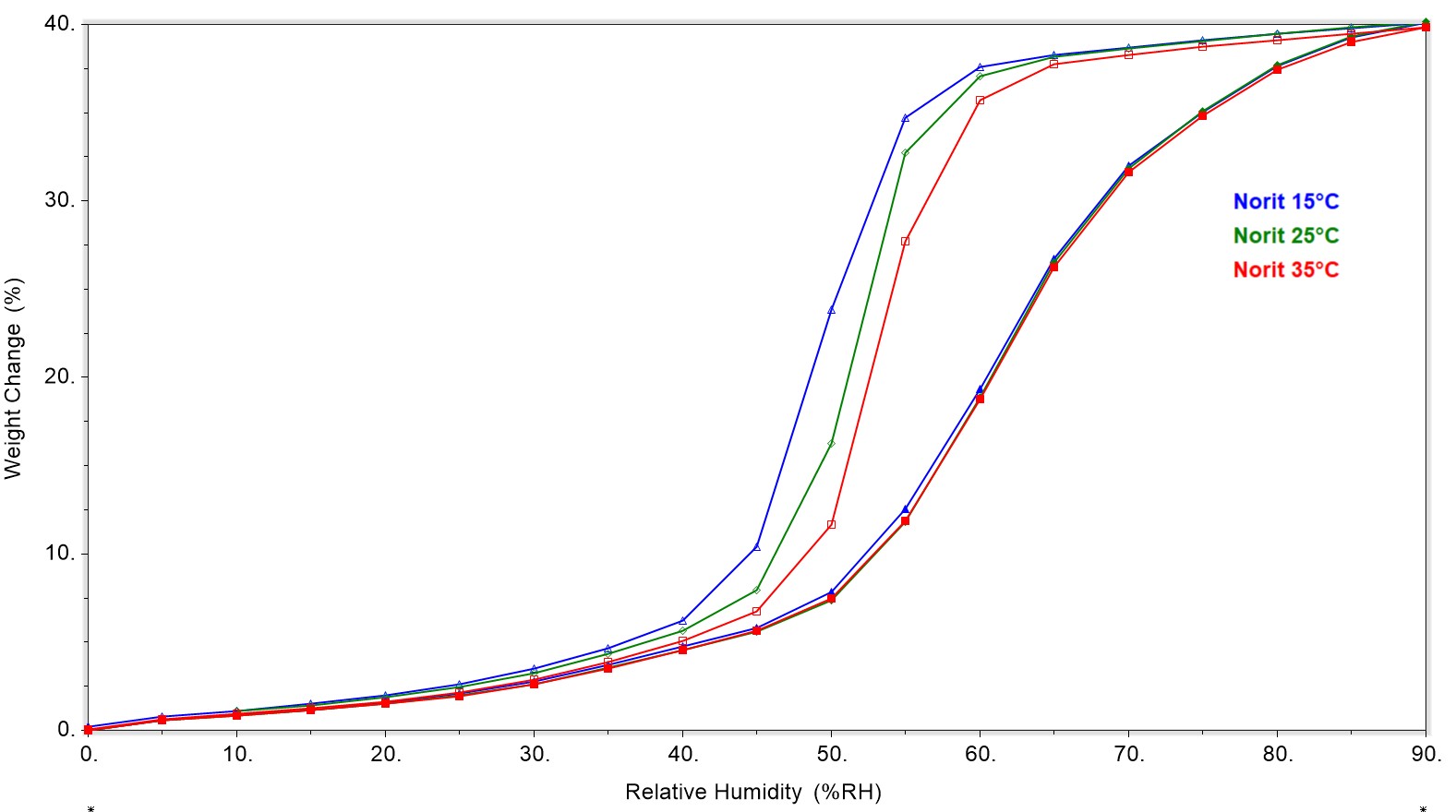(371d) A New Dynamic Vapor Sorption Instrument for the Investigation of Water Sorption on Porous Materials
AIChE Annual Meeting
2022
2022 Annual Meeting
Separations Division
Poster Session: Fundamentals and Applications of Adsorption and Ion Exchange
Tuesday, November 15, 2022 - 3:30pm to 5:00pm
The new Discovery SA Dynamic Vapor Sorption Analyzer by TA Instruments has been designed for the reliable routine analysis of water sorption properties of a broad variety of materials in application areas including food, pharma, polymer, electronics and building materials. It can also be used to study the water sorption capacity and kinetics of porous solids including carbon materials, zeolites or MOFs with high resolution. A special feature is the possibility to measure the adsorption of humid gas mixtures such as air or variable concentrations of carbon dioxide.
Experimental
The Discovery SA instrument includes a temperature controlled symmetric microbalance, a humidity control and an autosampler. Precise humidity control is provided by two mass flow controllers that deliver one dry and one completely saturated nitrogen gas stream that can be mixed to obtain a measuring atmosphere of 0 – 98% RH. The adjustment of exact and correct humidity levels at the position of the sample can easily be verified by measuring the deliquescence of various salts according to ASTM E2551. A gas blending module can be used to provide additional reaction gases other than nitrogen in controlled concentrations.
As a first example, vapor sorption was measured on a commercial Norit activated carbon material at 15, 25 and 35°C in a range from 0 to 90% RH. While the adsorption of water is not significantly affected by the temperature change, the desorption isotherms show a larger hysteresis loop at lower temperatures that vanishes completely below 30% RH.
In another measurement, a nanoporous carbon material consisting of micro beads of 250 to 500 µm diameter was analyzed at 25°C showing adsorption and desorption of vapor only between 50% and 70% RH which indicates a quite narrow pore size distribution.
Finally, a zirconium-based DUT-67 MOF supplied by the TU Dresden was measured as example for more polar adsorbents. Because the water sorption characteristics of this DUT-67 MOF are well described in the literature [1], it is a perfect material to document the performance of the Discovery SA Dynamic Vapor Sorption instrument.
Conclusion
With three different polar and non-polar porous materials, the excellent performance of the new Dynamic Vapor Sorption instrument could be documented. Upcoming next are studies with gas mixtures of nitrogen, air and carbon dioxide at varying RH levels.
References
[1] V. Bon, I. Senkovska, J.D. Evans, M. Wöllner, M. Hölzel and S. Kaskel, Insights into the water adsorption mechanism in the chemically stable zirconium-based MOF DUT-67 – a prospective material for adsorption-driven heat transformations, J. Mater. Chem. A, 2019, 7, 12681
Fig. 1 Vapor adsorption and desorption isotherms at 15, 25 and 35°C on Norit activated carbon material
